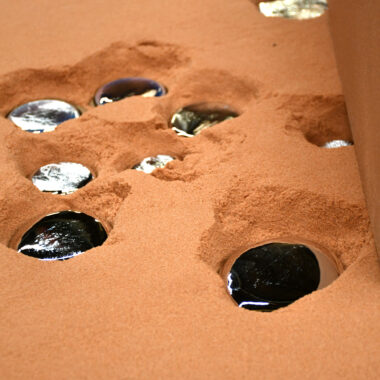Study the World of Light Weight Aluminum Spreading: Understanding the Various Techniques
Aluminum casting is a basic process in the manufacturing sector, with various techniques employed to develop precise and elaborate parts. From the traditional sand casting approach to the advanced die casting process, each approach supplies distinct advantages depending on the needs of the project.
Sand Spreading Technique
Sand spreading, a widely-used approach in light weight aluminum spreading processes, involves creating mold and mildews made of compressed sand for putting molten metal. Once the mold and mildew is all set, it is safely put in a flask and molten aluminum is put right into the tooth cavity.
After the metal has cooled down and strengthened, the sand mold is damaged away to reveal the light weight aluminum spreading. Sand casting allows for the manufacturing of complicated shapes and large components that might be pricey or tough to create using various other techniques. It is also a lasting method as the sand can be recycled and used numerous times, reducing waste in the spreading procedure.
Permanent Mold Strategy

One substantial benefit of the Irreversible Mold And Mildew Strategy is the boosted dimensional precision it supplies. The steel mold and mildew enables for tighter tolerances and finer details in the last light weight aluminum spreadings contrasted to sand casting methods. This precision makes it a recommended selection for applications where limited dimensional control is vital, such as in the vehicle and aerospace markets.

Pass Away Casting Refine

Investment Casting Approach
Utilizing an accuracy spreading technique, Investment Casting Strategy includes creating detailed aluminum components by putting molten steel into a ceramic mold and mildew. This process, also understood as lost-wax casting, starts with the creation of a wax pattern of the wanted part (aluminum casting).
Financial investment spreading is commonly utilized for making parts in sectors where limited resistances and intricate designs are needed, such as aerospace, auto, and clinical equipment. The flexibility and accuracy of the Financial investment Casting Strategy make it a valuable technique in the helpful hints world of aluminum casting.
Lost Foam Casting Technique
Having actually discovered the detailed accuracy of Financial investment Casting Approach, the focus now shifts to the innovative technique of Lost Foam Spreading in aluminum component manufacturing. Lost Foam Casting, also called evaporative pattern casting, is a contemporary method where a foam pattern of the preferred part is created and then coated with a refractory material. The coated foam pattern is after that hidden in sand, and molten light weight aluminum is put into the mold. As the metal fills the mold and mildew, the foam vaporizes as a result of the warmth, leaving a clean dental caries in the shape of the wanted component.
In Addition, Lost Foam Casting is a cost-efficient process as it minimizes the need for cores and enables for the manufacturing of lightweight parts. Regardless of its advantages, Lost Foam Spreading requires cautious control of the spreading process to make certain and prevent flaws top quality components.
Final Thought
In verdict, aluminum casting supplies a variety of methods such as sand casting, irreversible mold technique, die spreading, financial investment spreading, and shed foam spreading. Each method has its own advantages and applications, making light weight aluminum casting a functional and widely utilized process in different a fantastic read sectors. Understanding the differences between these techniques is critical in picking the most suitable casting technique for particular production demands.
Sand spreading, a widely-used technique in light weight aluminum spreading procedures, entails developing mold and mildews made of compressed sand for putting liquified steel. aluminum casting.The Irreversible Mold And Mildew Strategy, like sand spreading, is an additional widespread approach used in light weight aluminum spreading processes, using unique advantages in terms of mold reusability and dimensional accuracy. The metal mold and mildew permits for tighter resistances and better information in the final aluminum castings contrasted to sand spreading techniques. The two primary types of die casting are cool chamber pass away spreading and hot chamber die casting, each ideal for various kinds of aluminum alloys.In conclusion, light weight aluminum spreading uses a range of methods such as sand casting, irreversible mold and mildew method, pass away spreading, investment casting, and shed foam spreading